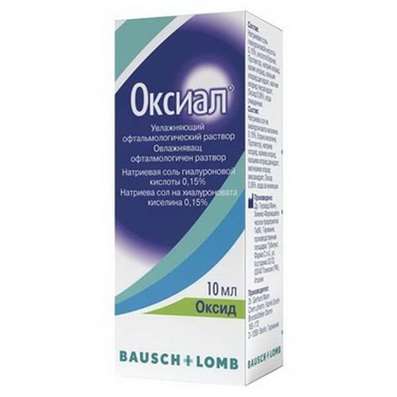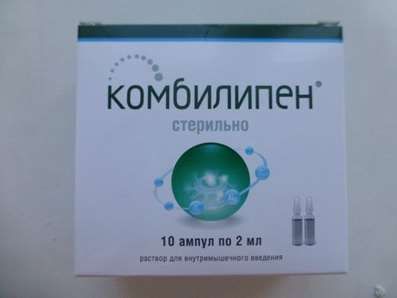Instruction for use: Atenolol Sandoz compositum
I want this, give me price
Active substance Atenolol + Chlortalidone
ATX Code C07BB03 Atenolol in combination with thiazide
Pharmacotherapeutic group:
Hypotensive combined tool (beta-blocker + diuretic) [Beta-blockers in combination]
The nosological classification (ICD-10)
I10 Essential (primary) hypertension
Hypertension, Arterial hypertension, Arterial hypertension crisis course, Essential Hypertension
Primary hypertension, Arterial hypertension, complications of diabetes, hypertension, The sudden increase in blood pressure, Hypertensive disorders of blood circulation, hypertensive condition, hypertensive crises, hypertension, arterial Hypertension, malignant Hypertension, Hypertonic disease, Hypertensive crisis, Hypertension, accelerated hypertension, malignant hypertension, The aggravation of hypertensive disease, Transient hypertension, Isolated systolic hypertension
I15 Secondary hypertension
Arterial hypertension, complications of diabetes, hypertension, The sudden rise in blood pressure, Hypertensive disorders of blood circulation, hypertensive condition, hypertensive crises, hypertension, arterial hypertension, malignant hypertension, Hypertensive crisis, Hypertension, accelerated hypertension, malignant hypertension, hypertensive crisis, The aggravation of hypertensive disease, Transient hypertension, hypertension, Arterial hypertension, Arterial hypertension crisis course, renovascular hypertension, symptomatic hypertension, renal hypertension, Renovascular hypertension, Symptomatic hypertension
Structure and Composition
Film-coated tablets 1 tablet.
active substance:
atenolol 50 mg
chlorthalidone 12.5 mg
Excipients: corn starch; magnesium carbonate; sodium dodecyl sulfate; hydroxypropylcellulose; sodium starch glycolate; magnesium stearate; lactose; methylhydroxypropylcellulose; titanium dioxide; PEG 4000
in blisters of 10 pcs .; in a stack of cardboard 3 packaging.
pharmachologic effect
antianginal, diuretic, hypotensive, antiarrhythmic, beta-adrenoceptor blocking.
pharmacodynamics
Combined antihypertensive drug, has long hypotensive effect. The effect is caused by the action of two components - a beta-blocker (atenolol) and a diuretic (chlorthalidone).
Atenolol: hydrophilic cardioselective beta1-blocker.
It makes no intrinsic sympathomimetic activity, has no membrane stabilizing activity.
The main pharmacological effects: antiadrenergicheskim, antianginal, antiarrhythmic, antihypertensive, cardioprotective.
Slows heart rate (negative chronotropic), slows AV conduction (negative dromotropic effect), reduce myocardial excitability (negative batmotroponoe effect), reduces myocardial contractility (negative inotropic effect), reduces blood pressure by these mechanisms, as well as by inhibiting renin secretion; reducing pressure in the portal vein due to reduction of mesenteric and hepatic blood flow.
Chlorthalidone: netiazidny sulfanilamide diuretic drug long-acting (48-72 hours after a single oral administration). Chlorthalidone violates the reabsorption of sodium, chlorine, and equivalent amounts of water in the distal tubules of the nephron; increased excretion of potassium ions, magnesium bicarbonate; delaying the excretion of uric acid, and calcium ions; reduces the sensitivity of the vascular wall to vasoconstrictor influences.
It refers to the average efficiency of diuretics and is characterized by an extremely low toxicity.
The main pharmacological effects: a diuretic and antihypertensive.
Indications
Essential hypertension.
Combination drug Atenolol compositum Sandoz® administered in the case where the individual active substance therapy to normalize the blood pressure is not sufficient, or for more convenient prescribing doses were chosen in separate therapy.
Contraindications
hypersensitivity to any component of the drug;
congestive heart failure;
chronic heart failure;
sick sinus syndrome;
bradycardia;
AV blockade II and III level;
severe hypotension;
peripheral circulatory disorders;
simultaneous MAO inhibitors (except receiving MAO-B inhibitors);
bronchial asthma, severe chronic obstructive bronchitis;
hypokalemia;
hyponatremia;
hypercalcemia;
gout;
childhood.
Pregnancy and breast-feeding
Use of the drug Atenolol compositum Sandoz® during pregnancy and during breast-feeding is contraindicated.
Side effects
Atenolol compositum Sandoz® generally well tolerated. Perhaps manifestation of the following side effects.
From the CCC: bradycardia, heart failure, cold extremities, AV block, increasing incidence of intermittent claudication syndrome, the occurrence of Raynaud's syndrome.
CNS: dizziness, insomnia, fatigue.
On the part of the digestive tract: diarrhea disorders.
Hematopoietic system: rarely - thrombocytopenia, leukopenia.
Dermatological reactions: skin rash, exacerbation of psoriasis.
From the water-electrolyte imbalance: hyponatremia (related to chlorthalidone), hypokalemia.
The respiratory system: in patients with bronchial asthma or with a history of bronchospasm indicate the possible occurrence of bronchospasm.
Other: hyperuricemia, impaired glucose tolerance, reduced potency (with prolonged use).
Interaction
Insulin and oral antidiabetic drugs: their action can be amplified. Signs of hypoglycemia - tachycardia and tremor. Regularly check your blood sugar levels.
Tricyclic antidepressants, barbiturates, phenothiazines, diuretics, vasodilators, and other antihypertensive drugs and alcohol: the antihypertensive effect may be increased.
ACE inhibitors (captopril, enalapril): at the beginning of therapy, possibly a sharp increase in the antihypertensive effect of the drug Atenolol compositum Sandoz®.
CCB nifedipine type: may increase the antihypertensive effect.
Antiarrhythmic agents: cardiodepressivny stacking.
BPC-type verapamil or diltiazem, disopyramide: possible sharp increase in antihypertensive effect, the development of bradycardia and other cardiac arrhythmias. Should be avoided in / in the introduction of these agents in patients receiving the drug Atenolol compositum Sandoz®.
Cardiac glycosides, reserpine, alpha-methyldopa, guanfacine or clonidine: because of the possible occurrence of potassium deficiency and / or magnesium in connection with taking the drug Atenolol kompozitum Sandoz® may increase sensitivity of the cardiac muscle to cardiac glycosides and thus to increase the frequency of side effects.
Clonidine: abrupt withdrawal of clonidine may lead to increased blood pressure, so stop taking clonidine should be carried out gradually and in just a few days after discontinuation of the drug Atenolol compositum Sandoz®.
Norepinephrine, epinephrine: may substantially increase blood pressure.
MAO inhibitors: may increase blood pressure.
Salicylates and other NSAIDs (eg, indomethacin): may reduce the antihypertensive effect, but at a high dosage of salicylates increase in the toxic effects of salicylates on the central nervous system.
Narcotic drugs: increased antihypertensive effect and the summation of negative inotropic effect.
Muscle relaxants (tubocurarine) may increase or attenuation of the neuromuscular blockade. Anesthesiologist must be made aware of taking the drug Atenolol compositum Sandoz®.
GK, carbenoxolone, amphotericin B, furosemide: may increase potassium excretion.
Lithium: Lithium elimination reduction and increased cardiovascular and neurotoxic effects of lithium.
Dosing and Administration
Therapy begins, usually with a low dose (50 mg atenolol and chlorthalidone 12.5 mg 1 time per day). If necessary, and depending on the patient, the dose can be increased to receive one tablet containing 100 mg of Atenolol and chlorthalidone 25 mg, 1 times a day.
In patients with impaired renal function the dose should be reduced.
Atenolol compositum Sandoz® should be taken before breakfast without chewing and drinking plenty of fluids.
Abolition of the drug after long-term treatment should be carried out, as far as possible, gradually.
Overdose
Symptoms: Nausea, vomiting, loss of appetite, tremor, anxiety, palpitations, headache, pain in the chest.
Treatment: bradycardia development enter in / 1.2 mg atropine, if necessary - 10 mg of glucagon / in bolus. In the absence or the ineffectiveness of glucagon might / in dobutamine (2.5 g / min / kg) or isoprenaline 10-25 ug / drip at a rate not exceeding 5 g / min.
special instructions
Be wary appoint expressed human liver and kidney function (glomerular filtration below 30 ml / min and / or Cl creatinine higher than 1.8 mg / 100 ml), labile diabetes mellitus type 1, the presence in patients of hormone of the adrenal tumor, the therapy of digitalis glycosides , glucocorticoids or taking laxatives, AV block of I degree.
Patients with psoriasis in the family history of administration of drugs containing beta-adrenergic blockers (atenolol compositum Sandoz®), is only possible with careful weighing of risks and benefits.
Beta-adrenoceptor blockers may increase the sensitivity to allergens and cause severe anaphylactic reactions, and therefore patients undergoing desensitizing therapy, the drug should be taken with great caution.
Against the background of treatment requires systematic monitoring of the level of potassium in the blood, especially in elderly patients, patients receiving cardiac glycosides, in patients with impaired gastrointestinal function.
The impact on participation in road traffic: due to the possibility of individual reactions to the drug may impair the ability to adequately participate in a road traffic or management mechanisms, which require quick response. This effect increases with the simultaneous reception of alcohol.
Conditions of supply of pharmacies
On prescription.
storage conditions
The temperature is not above 25 ° C.
Keep out of the reach of children.
Shelf-life
5 years.
Do not use beyond the expiration date printed on the package.

 Cart
Cart





